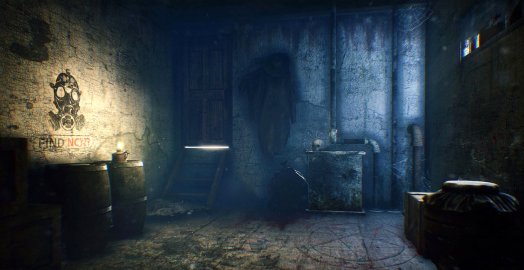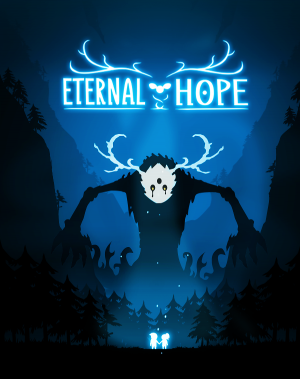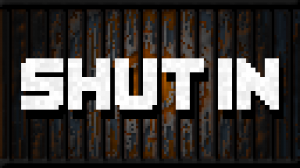Review for Dark Room

Dark Room is a first-person point-and-click puzzle adventure by Iranian Lexip Games, and the first episode in a planned trilogy of supernatural thrillers. Unfortunately, this first outing gets the series off to an inauspicious start. While the puzzles provide a genuine challenge with a decent mix of inventory and logic tasks, players are expected to play the game three times in order to solve them all. Meanwhile, a terribly disjointed plot mixing horror and science fiction is saddled with such an awful translation job that it is almost impossible to understand what is actually going on. In isolation, the puzzles would have been entertaining for the most part, but the production values are generally mediocre and the overall experience is dragged down by a number of serious problems, limiting its appeal to those who truly only care about puzzles and nothing else.
Let’s get this out of the way right now: Dark Room’s story is profoundly incoherent. The main character has amnesia, and part of your job is to find out who you are and why you find yourself in the creepy house in which the game takes place. The beginning is promising enough, with pentagrams, ghostly apparitions, and assorted jump scares setting a tense mood appropriate for a horror game. However, making progress triggers flashback cutscenes that introduce a sci-fi-inspired backstory with government conspiracies and secret experiments that does not mesh well at all with the paranormal elements.
It goes downhill from there, and the attempts to explain your identity and your role in the events leading to the present do practically nothing to make the details clearer. Part of the fault for this this lies in the atrocious English translation throughout all aspects of the game. Notes scattered throughout the environment that are supposed to provide puzzle clues, while at the same time shedding light on both your captors and other characters who have been trapped in the house before you, are so confusingly localised that the credits had almost rolled before I finally understood that the words “species” and “sample” were supposed to be “subject” in both cases. Interacting with items will prompt on-screen and occasionally spoken remarks that are often similarly awkward or outright butchered. For instance, the main character asks, “How does it broke?!” (inexplicably with no voice-over) when confronted with a mirror that breaks while he’s looking at it.
While the major issues of who you are and what is going on appear to be answered to some degree, I’m not even completely sure about that much. The various details provided throughout add up to a mess that is terribly confusing for all the wrong reasons, leaving more questions than answers. Why are there pentagrams all over the house? What about that random note hinting that Franz Kafka wanted his writings burned for a secret reason, and how does it relate to the game? What caused that mirror to break (sorry, “How does it broke?!”), and what is responsible for the ghostly apparitions and chilling screams in various rooms? While there are a few hints that things might not be as they seem to the main character, ultimately none of the horror elements here are ever clearly justified or explained. Likewise, even the slickly produced opening cinematic, which poses a rumination on chess pieces and the role of the chess players as unseen agents, is intriguing, but ultimately a hollow gesture to elements that never really pay off. In the end, Dark Room gave me no reason to care at all about the story being told, and quite frankly, the plot made so little sense to me that, even as a way to provide context for my actions, it felt completely pointless.
Adding major insult to injury, the game requires three playthroughs, of “Easy,” “Normal” and “Hard” difficulty in ascending sequence, in order to both reveal the complete narrative and to solve all of the puzzles Dark Room has to offer. The next difficulty level unlocks after the previous one is completed, and while some logic puzzle solutions differ from one level to the next, subsequent playthroughs share the same plot points, the same flashback scenes, and the same puzzles throughout, save for a fairly elaborate challenge at the end of each that is unique and appropriate to the chosen difficulty. Each ending results in plot information withheld in previous playthroughs, but again, don’t expect added clarity. Given the sci-fi elements, I expected there might be some plot-driven reason for making players replay the game multiple times, but it eventually became clear that, infuriatingly, the sole purpose is apparently to turn a 2-3 hour game into a 6-7 hour one.
Given how dreadful the story execution is, it’s a relief to note that Dark Room’s puzzles are actually decent. Granted, if you want to solve all of them you will need to endure the game three times over, but if you have the patience for it, you’ll be rewarded with a variety of inventory and logic tasks that provide a solid challenge. The inventory obstacles typically ask you to use the right item on another, such as a key and lock, or to combine two objects to make something usable like a flashlight. None are particularly difficult to solve, and the solutions for them, perhaps reasonably, do not vary for subsequent playthroughs. There aren’t too many items to clutter up your inventory, but the benefit is that it never feels particularly onerous to repeat them multiple times.
The real meat of the gameplay is its diverse range of logic puzzles. Examples include finding various codes to open combination locks or unlock computer systems, examining paintings closely for clues, and deciphering the meaning of mysterious phrases or images scrawled on various surfaces in order to make progress or access a new area of the house to explore. These provide fairly entertaining challenges, especially since the answers change with the difficulty level. Better yet, the method needed to reach a solution can change as well, increasing the complexity, such as solving a simple math problem as opposed to simply copying down the number you see in one place and inputting it in the correct mechanism elsewhere. Two slider puzzles make an appearance, one a traditional unscramble-the-image type and one that requires you to slide blocks around in order to free one from the side of the board. Luckily, neither is particularly hard to solve, requiring only patience and time to complete.
Even the puzzle-solving experience is not uniformly positive, however. There is some pixel hunting to be done, which in one particular instance is so intensive that I needed a walkthrough to figure out where to click. Also, the built-in hint system that is available for some – but not all – puzzles is of limited utility, suffering from the same translation issues affecting the rest of the game, making it a problem at times to know what the hint is telling you. Combined with the occasionally overly vague clues the game presents you in the course of play, I ended up resorting to a walkthrough a few times, even though in hindsight I probably could have figured out the answers if I had shown more patience. It is also worth noting that one particular puzzle common to all three levels requires the repeated and sustained use of quick reflexes, getting tougher with each increased difficulty level. Given how difficult it was for me to successfully complete, it is entirely possible that those with dexterity issues may have difficulty finishing Dark Room without assistance.
The point-and-click slideshow-style interface will be quite familiar to any adventure game veteran and easy to learn for the inexperienced. Save for a puzzle that requires the use of the keyboard, Dark Room is played with the mouse, using clicks to interact with everything in the environment and pick items up. The inventory, accessible from an icon in the corner of the screen, allows you to see and select your currently held objects, combining some as needed.
While the graphics aren’t outstanding, Dark Room features a well-made, fully animated and attractive opening cinematic, followed by some fairly atmospheric, realistically illustrated scenes throughout. The application of chromatic aberration near the edges of the screen helps to lend an interesting air to the various rooms and hallways, especially the upstairs one that features a mounted buck with bleeding eyes. But even these touches can’t enliven the dull earth-toned locations, of which there are quite a few. Much of the creepy atmosphere is courtesy of the disheveled, grimy nature of many scenes, and the initial sense that something is simply “off” about the setting, enhanced by features like pentagrams, skulls, and creepy portraits. Unfortunately, the atmosphere wears off rather quickly, mainly because the horror elements simply stop feeling threatening once you realize that they aren’t adding up to anything more than window dressing.
Sound effects are similarly functional, such as footsteps when climbing stairs, quiet confirming thumps when selecting items, rustling when picking up papers, and appropriate effects for opening and closing different kinds of doors, among various others. Voice-overs are more obviously problematic, with delivery primarily hindered by the poorly translated script. Aside from the main character occasionally muttering to himself, and the screams and jump scares hinting that you might not be alone, Dark Room is meant to imbue a sense of loneliness, but the cutscenes that interrupt to share backstory break the sense of solitary exploration in a jarring way. Of the very few music tracks, only one of these – an ominous orchestral piece – accompanies you throughout most of your time with the game. I have no idea how many times it looped during my three playthroughs, but by some miracle it never became so intrusive or tiresome that I disabled the music altogether. I can only attribute this to its low-key nature, which allowed it to simply blend into the background. The other tracks play only at specific points, such as at the title menu and the credits. The rock-inspired credits music is pretty decent, but like the rest of the score, it’s mostly filler.
All in all, Dark Room is a disappointing experience that requires a willingness to put up with too many bad aspects to see the good parts buried underneath. The confounding narrative is marred by so many problems that it would have been a better game without one. While the translation is the biggest hindrance to clarity, the plot itself is a bizarre mashup of non-sequitur horror elements encountered during gameplay and a sci-fi backstory so confusing that by the end I simply didn’t know what was going on anymore. The puzzles are the one bright area, providing ample brainteasers that get more difficult as the game progresses. Unfortunately, one has to play three times through in order to see every puzzle and plot point Dark Room has to offer, a rather unseemly attempt to pad the game’s length that adds only marginal replay value. At its budget price, the curious may find value in a single playthrough, while those who enjoy puzzles and nothing else (you know who you are) might find it worth the effort of slogging through three times over. I certainly didn’t, and I don’t expect most gamers will, either. Whether you like horror or science fiction, or just adventure games in general, there are many better options out there.
Our Verdict:
While the puzzles are genuinely decent, only the most die-hard puzzle fanatics will likely be willing to play Dark Room a single time through, let alone all three times it will take to see everything it has to offer. For most gamers, the negatives will vastly outweigh the positives in the lackluster first episode of this horror/sci-fi adventure series.



























